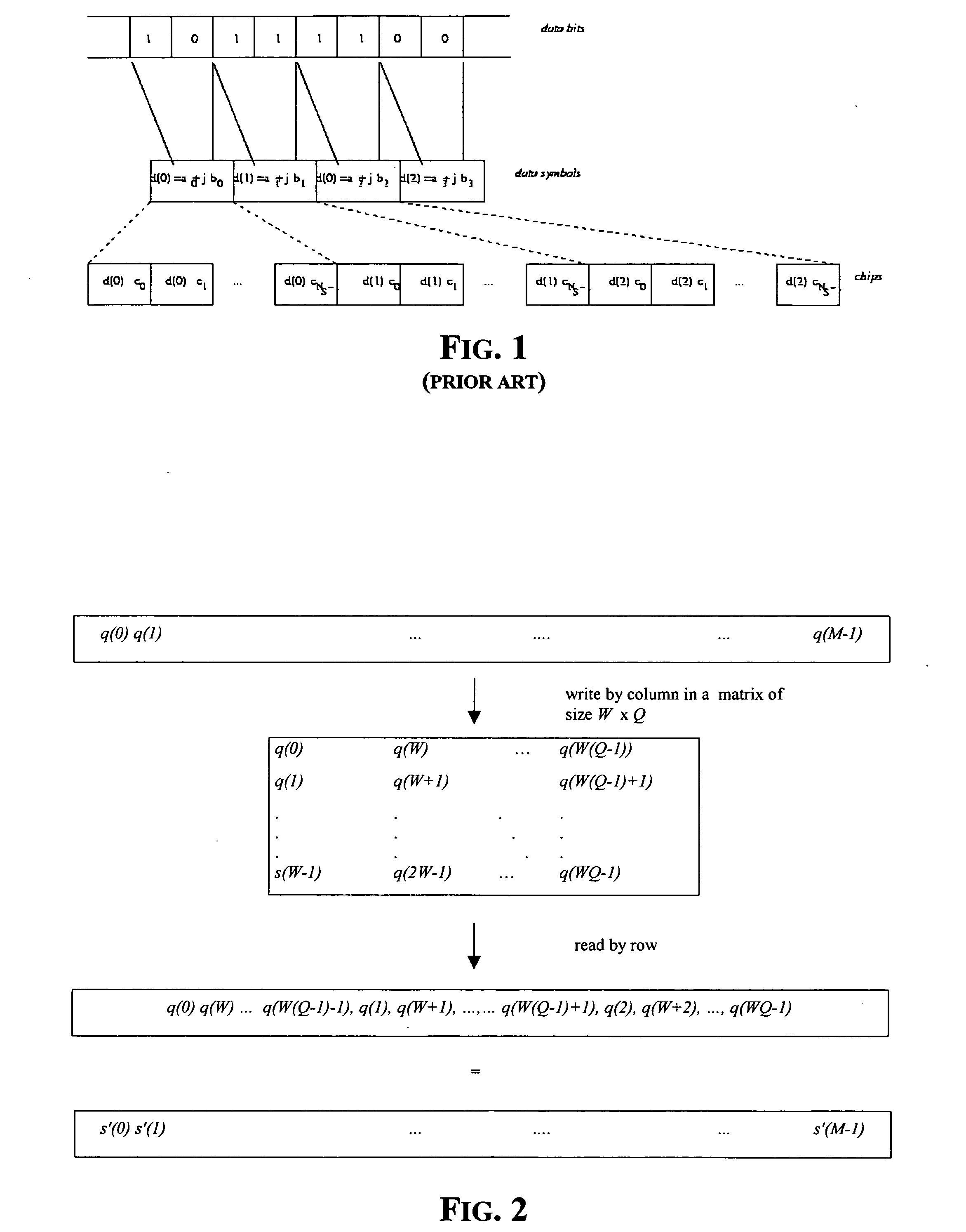Frequency-domain multi-user access interference cancellation and nonlinear equalization in CDMA receivers
a multi-user access and receiver technology, applied in the field of mobile transmission network systems and code division multiple access (cdma) techniques, can solve the problems of blockage of de-spread signals that cannot be idealized, and significant affecting the performance of cdma transmissions, etc., to achieve the effect of improving the performance of either a sic or a pic technique, reducing multi-user access interference (mai), and enhancing performan
- Summary
- Abstract
- Description
- Claims
- Application Information
AI Technical Summary
Benefits of technology
Problems solved by technology
Method used
Image
Examples
Embodiment Construction
[0024] For ease of explanation the ensuing description is divided in the following sections: 1) The System Model—which illustrates an embodiment of the system and the data transmission format that is used for an FD implementation of the receiver and the interleaving that is implemented at a chip level; 2) Interference Cancellation and DFE—which describes the FD implementation of both SIC and PIC and the iterative block DFE detector; and 3) Design Methods—which illustrates the manner in which the filter coefficients of the DFE are defined.
[0025] System Model. In terms of notation, a signal is denoted with a lowercase letter, while its DFT is denoted with the corresponding uppercase letter. Vectors and matrices are denoted with letters, and * denotes complex conjugate.
[0026] In a wideband CDMA communication system, where K users are transmitting simultaneously, codes with spreading factor NS are used. For the user k, the data signal d(k)(n), at rate 1 / T, is spread with the code c(k)...
PUM
 Login to View More
Login to View More Abstract
Description
Claims
Application Information
 Login to View More
Login to View More - R&D
- Intellectual Property
- Life Sciences
- Materials
- Tech Scout
- Unparalleled Data Quality
- Higher Quality Content
- 60% Fewer Hallucinations
Browse by: Latest US Patents, China's latest patents, Technical Efficacy Thesaurus, Application Domain, Technology Topic, Popular Technical Reports.
© 2025 PatSnap. All rights reserved.Legal|Privacy policy|Modern Slavery Act Transparency Statement|Sitemap|About US| Contact US: help@patsnap.com



